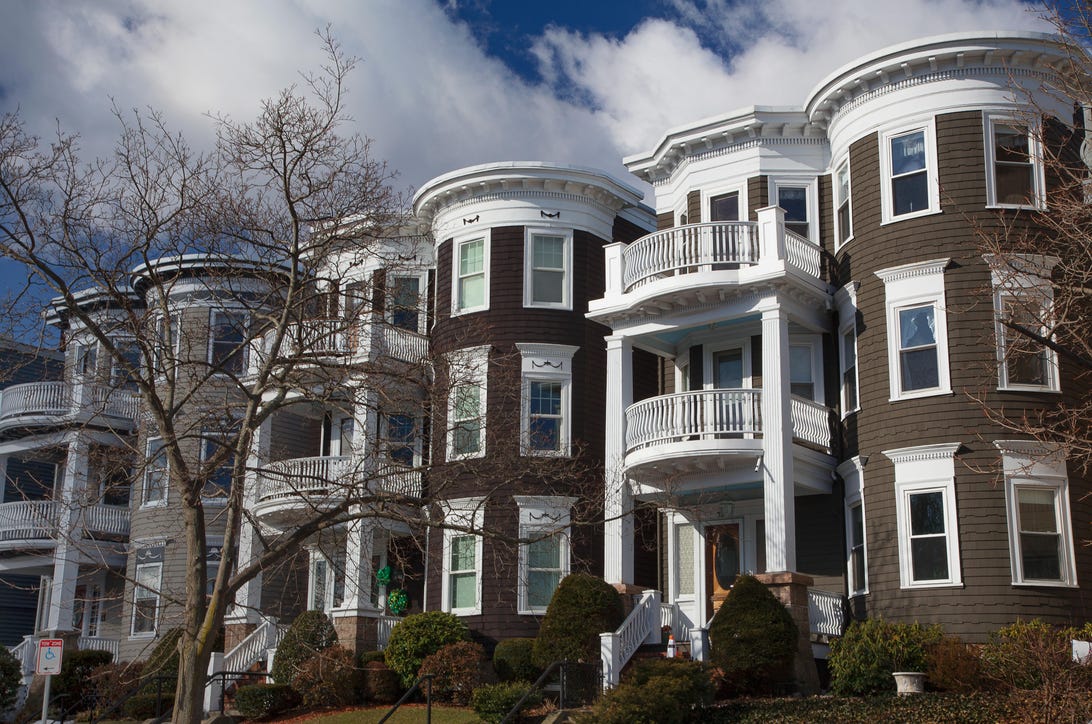
A handful of mortgage rates, including 15-year fixed and 30-year fixed mortgages, are continuing to climb to the highest levels since before the pandemic. The average rate of 5/1 adjustable-rate mortgages has also gone up. With mortgage rates at historic lows over the last period, it’s been a fine time for prospective homebuyers to lock in a fixed rate. However, rates fluctuate and are projected to keep going up. Before you buy a house, consider your personal needs and financial situation, and remember to speak with multiple lenders to find the best one for you.
30-year fixed-rate mortgages
The average interest rate for a standard 30-year fixed mortgage is 4.00%, which is a growth of 5 basis points from one week ago. (A basis point is equivalent to 0.01%.) Thirty-year fixed mortgages are the most frequently used loan term. A 30-year fixed mortgage will often have a greater interest rate than a 15-year fixed rate mortgage — but also a lower monthly payment. Although you’ll pay more interest over time — you’re paying off your loan over a longer timeframe — if you’re looking for a lower monthly payment, a 30-year fixed mortgage may be a good option.
15-year fixed-rate mortgages
The average rate for a 15-year, fixed mortgage is 3.34%, which is an increase of 3 basis points from seven days ago. You’ll definitely have a higher monthly payment with a 15-year fixed mortgage compared to a 30-year fixed mortgage, even if the interest rate and loan amount are the same. But a 15-year loan will usually be the better deal, if you’re able to afford the monthly payments. These include typically being able to get a lower interest rate, paying off your mortgage sooner, and paying less total interest in the long run.
5/1 adjustable-rate mortgages
A 5/1 adjustable-rate mortgage has an average rate of 4.01%, an uptick of 4 basis points from the same time last week. With an ARM mortgage, you’ll typically get a lower interest rate than a 30-year fixed mortgage for the first five years. However, changes in the market may cause your interest rate to increase after that time, as detailed in the terms of your loan. For borrowers who plan to sell or refinance their house before the rate changes, an ARM could be a good option. Otherwise, changes in the market means your interest rate could be much higher once the rate adjusts.
Mortgage rate trends
While 2022 kicked off with low mortgage rates, they have seen an uptick recently. There are two major factors at play here: increasing inflation rates and a growing economy. That said, rates can always rise and fall for a variety of reasons. The spread of omicron, for instance, kept rates relatively low throughout December and the start of the new year. Overall, rates are expected to go up in 2022, particularly with the Federal Reserve’s decision to reduce its bond purchases and increase interest rates.
We use data collected by Bankrate, which is owned by the same parent company as CNET, to track rates changes over time. This table summarizes the average rates offered by lenders nationwide:
Current average mortgage interest rates
| Loan type | Interest rate | A week ago | Change |
|---|---|---|---|
| 30-year fixed rate | 4.00% | 3.95% | +0.05 |
| 15-year fixed rate | 3.34% | 3.31% | +0.03 |
| 30-year jumbo mortgage rate | 2.88% | 2.85% | +0.03 |
| 30-year mortgage refinance rate | 4.03% | 3.99% | +0.04 |
Updated on Feb. 14, 2022.
How to find personalized mortgage rates
To find a personalized mortgage rate, meet with your local mortgage broker or use an online mortgage service. In order to find the best home mortgage, you’ll need to consider your goals and current finances. Things that affect what mortgage rate you might get include: your credit score, down payment, loan-to-value ratio and your debt-to-income ratio. Having a higher credit score, a higher down payment, a low DTI, a low LTV, or any combination of those factors can help you get a lower interest rate. Apart from the interest rate, other factors including closing costs, fees, discount points and taxes might also factor into the cost of your house. Be sure to talk to multiple lenders — such as local and national banks, credit unions and online lenders — and comparison shop to find the best mortgage for you.
What’s the best loan term?
One important thing to consider when choosing a mortgage is the loan term, or payment schedule. The mortgage terms most commonly offered are 15 years and 30 years, although you can also find 10-, 20- and 40-year mortgages. Another important distinction is between fixed-rate and adjustable-rate mortgages. For fixed-rate mortgages, interest rates are stable for the life of the loan. For adjustable-rate mortgages, interest rates are set for a certain number of years (commonly five, seven or 10 years), then the rate changes annually based on the market rate.
One important factor to consider when choosing between a fixed-rate and adjustable-rate mortgage is how long you plan on staying in your house. For those who plan on living long-term in a new house, fixed-rate mortgages may be the better option. While adjustable-rate mortgages may offer lower interest rates upfront, fixed-rate mortgages are more stable in the long term. If you don’t have plans to keep your new home for more than three to 10 years, however, an adjustable-rate mortgage might give you a better deal. There is no best loan term as a general rule; it all depends on your goals and your current financial situation. Make sure to do your research and know what’s most important to you when choosing a mortgage.



